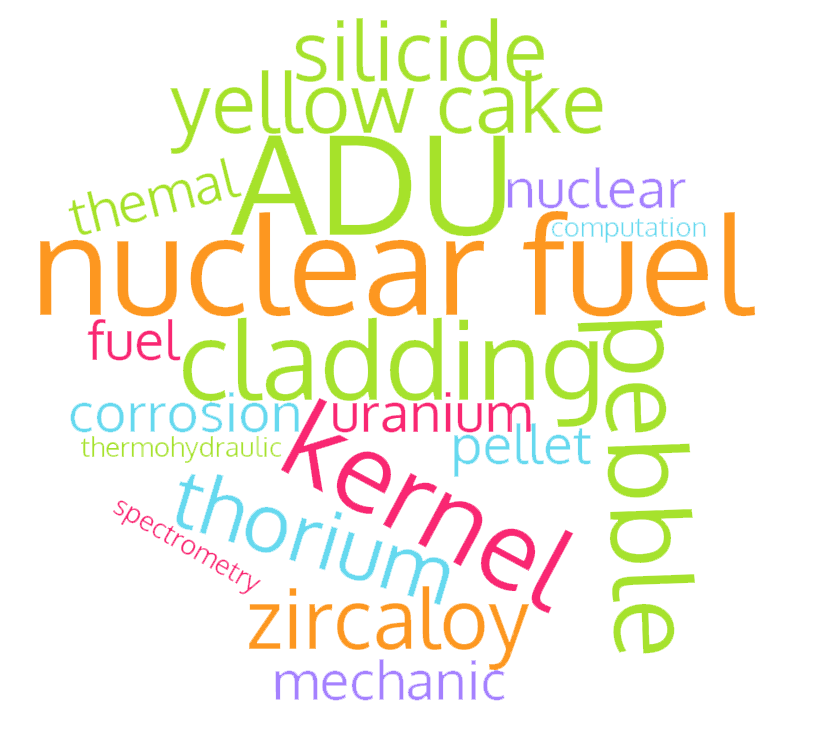TRANSFORMASI STRUKTUR KRISTAL FASA - PADA SERBUK BAJA A2 NON STANDAR BAHAN STRUKTUR REAKTOR
DOI: http://dx.doi.org/10.17146/urania.2014.20.2.2384
Sari
ABSTRAK
Transformasi struktur kristal fasa a-g pada Serbuk Baja A2 non Standar Bahan Struktur Reaktor. Dalam memenuhi kebutuhan material baja yang memiliki keunggulan khusus seperti bahan struktur tahan operasi temperatur tinggi, Pusat Sains dan Teknologi Bahan Maju (PSTBM) BATAN telah membuat serial baja austenitik (A) dan feritik (F) non standar secara mandiri, yang diterapkan sebagai bahan struktur reaktor. Sifat tekstur yang mencerminkan kekuatan mekanik bahan teknik pada arah tertentu sangat menarik diteliti. Bahan isotropic yang dibuat dari serbuk sebagai data pembanding terhadap sifat anisotropic akibat perlakuan (pengerolan) digunakan untuk mendapatkan sifat tekstur bahan baja A2 non standar. Tujuan pembuatan bahan serbuk A2 ini adalah untuk melakukan koreksi isotropis terhadap pengukuran sifat tekstur baja A2 non standar. Bahan serbuk Fe, Cr, Ni, Mn dan Si sesuai dengan komposisi A2 dicampur homogen dan dibuat pelet dengan penekanan 6 ton/cm2. Fasa awal serbuk A2 ditransformasikan ke dalam sistem paduan isotropik (fasa matrik) baja A2 non standar dengan proses sintering dan mengacu pada diagram fasa paduan Fe-C serta formulasi karbon ekuivalen (CE). Hasil memperlihatkan bahwa serbuk A2 berhasil mencapai fasa austenitik dari bahan mentah komposit dengan poses sintering 1100 °C selama 6 jam. Analisis kuantitatif Rietveld melaporkan bahwa: struktur pada bahan adalah: 78 % fasa g-Fe (fcc; a=b=c, a=b=g), 16 % fasa Fe3C (rhombohedral; a¹b¹c, a=b=g) dan 6% fasa a-Fe (bcc; a=b=c, a=b=g) yang berasal dari fasa g-Fe metastabil.
Kata Kunci : serbuk A2, baja A2 non standar, difraksi neutron, difraksi sinar-X , MAUD dan analisis Rietveld.
ABSTRACT
transformation of crystal structure a-g phase on A2 Non Standard Steel Powder AS Reactor Structure MaterialS. For meeting the need for steel materials having a distinctive quality such as high-temperature resistant, the Center for Science and Technology of Advanced Materials (PSTBM) BATAN has independently synthesized a series of non standard austenitic (A) and ferritic (F) steels, which are to be utilized as the fundamental structural material of a nuclear reactor. The study of textural pattern in engineering materials is the area of interest since textural pattern is a manifestation of the mechanical strength properties of the fore-mentioned materials in a particular coordinate or crystallographic direction. Materials with both isotropic and anisotropic properties (due to the rolling treatment ) are used and compared in this work to obtain the texture properties of non-standard steel A2. The purpose of A2 powder material synthesis is to obtain the isotropic correction to the measurement of textural properties of non standard A2 steel. The starting Fe, Cr, Ni, Mn and Si powder materials are homogenously mixed in accordance with the A2 fractional composition and pelletized with a pressure load of 6 tons/cm2. The transformation of the initial A2 phase powder into the isotropic alloy system (matrix phase) A2 non-standard steel is achieved by sintering process in accordance with the phase diagram of Fe-C alloy and the formulation of carbon equivalent (CE). The results show that the non-standard powder alloy A2 has been successfully transformed from composite raw materials into austenitic phase after six hours of sintering at 1100 °C followed by quenching to room temperature. Rietveld quantitative analysis shows that the structure of the material is about 78% g-Fe phase (fcc; a=b=c, a=b=g), about 16 % Fe3C-phase (rhombohedral; a¹b¹c, a=b=g) and about 6 % a-Fe phase ( bcc ; a=b=c a=b=g ) that is originated from g-Fe metastable.
Keywords : A2 powder, A2 non standard steels, neutron diffraction, X-ray diffraction, MAUD and Rietveld analysis.Teks Lengkap:
PDFRefbacks
- Saat ini tidak ada refbacks.
Penerbit: Pusat Riset Teknologi Daur Bahan Bakar Nuklir dan Limbah Radioaktif
Diindeks oleh:









